
Chances are high you’ve played a Metroidvania or two by this point and while it’s not the best term, it’s certainly a solid genre by this point. The absolute dearth of games coming out in this vintage 2D format is so staggering that it’s honestly hard to believe it isn’t going to be ground into dust by overplay. But the games just keep on rolling in and many of them have unique and interesting visions for the genre.
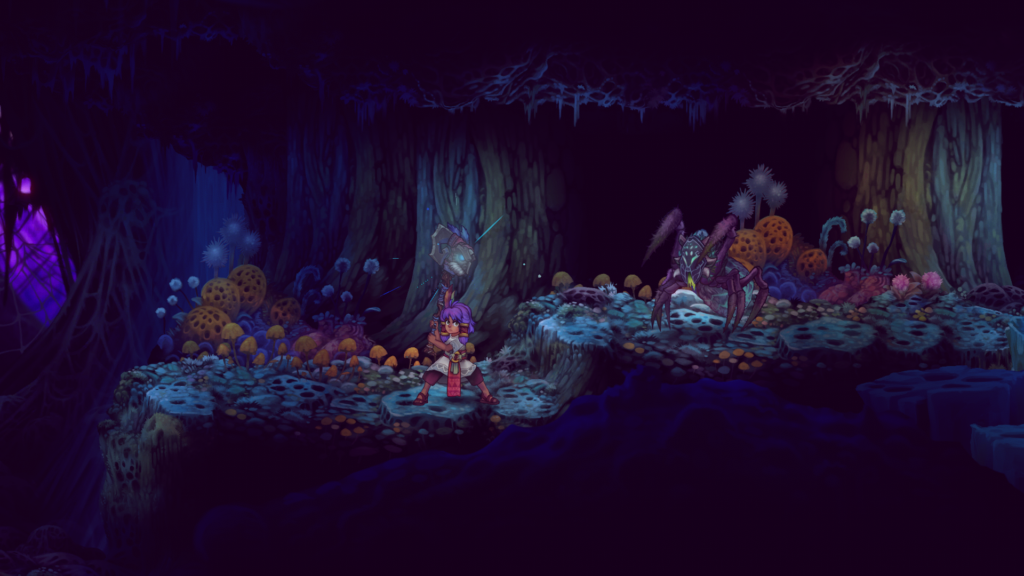
Itorah from developer Grimbart Tales and publisher Assemble Entertainment is one of those games that is trying to push your expectations. The game is self-described as “Mesoamerican-inspired” and that’s definitely noticeable in the background design and colorful character artwork. Whether or not that transfers over to the plot and gameplay is a little less clear however.

In Itorah, you play a girl named, well, Itorah. Her village is overrun and she’s chased by a horde of spiders, webbed up and left to rot. An indeterminate amount of time later she wakes, still webbed, and meets a sentient living hammer who joins her in finding out what happens. Turns out she’s apparently the last human and the world is full of weird new creatures, both enemy and friend, including a bunch of anthropomorphic half-human animals that conveniently speak Itorah’s language. Handy, that. Unfortunately, the World Tree is infected with some kind of plague and the village of animal people is under threat from a variety of monsters. Good thing you’ve got your trusty hammer!

The entire plot is couched in a standard side-scrolling format that will be familiar to veteran Metroidvania players. You slowly gain abilities as you explore the map, then return to the village to move the story forward. Combat primarily consists of slashing with your hammer and dodging various attacks. There’s a run button, a dodge roll, and an attack button that triggers a more powerful attack with multiple swings. It’s a fairly standardized format to the point where combat is basically intuitive. Unfortunately, while the controls themselves are intuitive, the control response is not nearly as well-designed.

First off, the hitboxes for Itorah are a bit tight, forcing you to get in close with most enemies to the point that the huge sprites are almost overlapping before you can do any damage. There’s a lot of ‘swing and a miss’ gaming here with enemies neatly dodging you as you chase them around the screen. Then there’s the control stick response. This is supposed to be a precision platformer, but the stick response is so loose and the momentum of your character is so high that it’s honestly easier to use the D-Pad. Playing with both an Xbox One controller and a PS3 controller made no difference either. It’s not a controller variance, but instead an issue with the interface itself. Itorah just doesn’t control all that well and for a game that wants you to make a ton of fairly precise jumps and airborne slashes at enemies, that is more than a little frustrating.
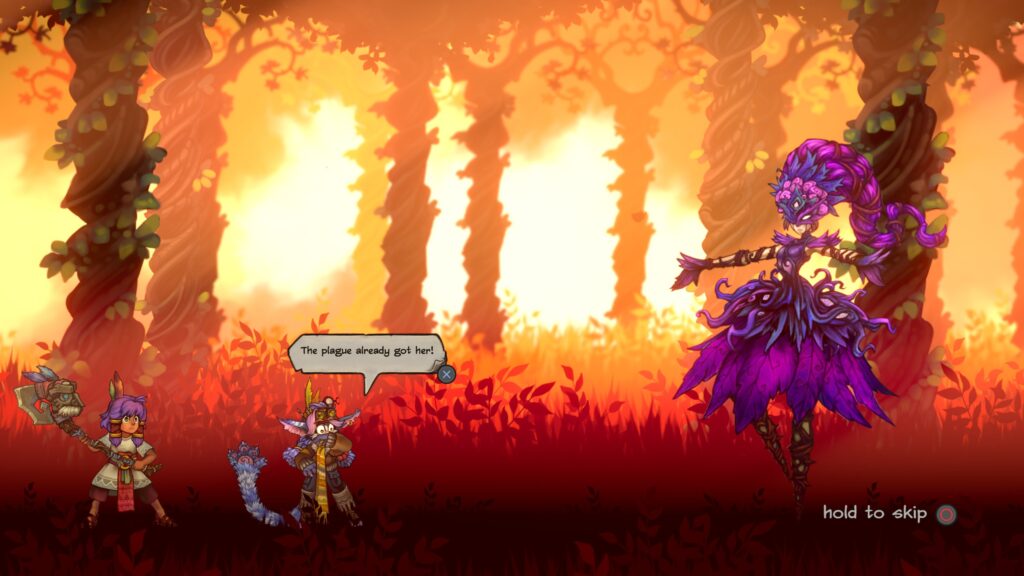
Once you get used to the loose and somewhat unresponsive controls, you’ll actually progress fairly rapidly in Itorah and there are two reasons for that. One is that the game is surprisingly linear, rarely forcing you go to much of anywhere you don’t need to. The game always makes your pathway clear and there just aren’t that many routes to take. In that sense, Itorah is more of a Metroid-Lite than a real Metroidvania.

The other reason is that the enemies are sporadic at best and non-existent at worst. Levels are vast but lightly populated and combat is somewhat unsatisfying. You can simply walk or run past most of the ones that aren’t fun to fight because there’s not much of a need to grind for the gems that are the currency of the game. You’ll find far more money in chests than you will killing random small enemies anyway and why waste time fighting when you can literally just zip right past and keep going and you know your walk is going to take you 5-10 minutes to get where you want to go anyway? Level design is definitely a weak point in Itorah and the simplistic levels and puzzles are not particularly gratifying. Exploration nets you a fat lot of nothing most of the time too and the game subtly encourages you to stick to the path.
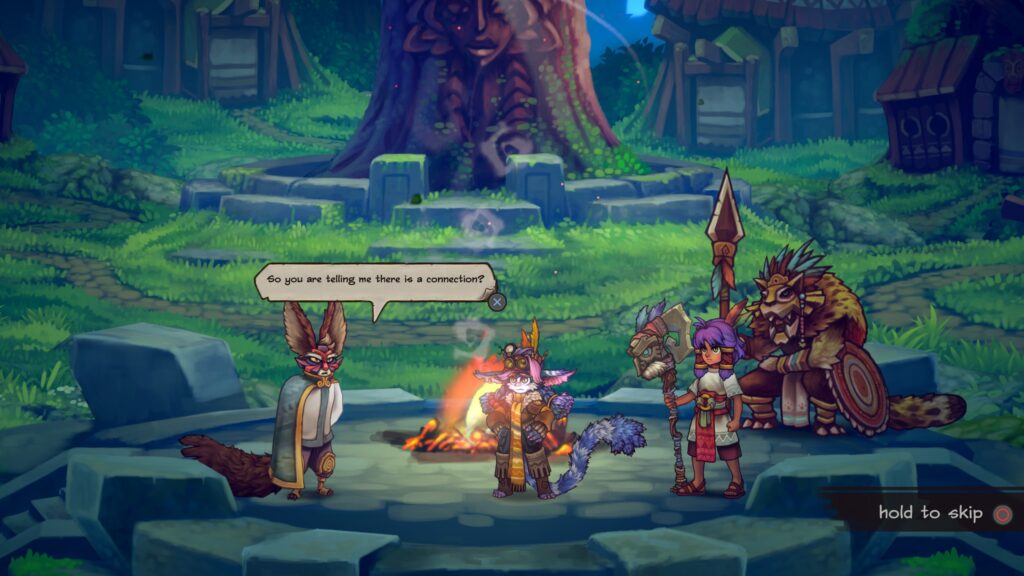
That would all be well and good if the plot was deep and satisfying, but there’s no real deep connection to the characters. Sure, you’ve got a lippy hammer and there are a few clever moments but it’s hard to even care what happened to the humans as Itorah herself doesn’t have much personality. Upgrading adds a bit of depth but even that is limited. You can boost health and stamina with gems and items you find in levels (often clearly shown on maps), and use the money to boost healing and other abilities as well. You have to go back to the village to do it though and sometimes that takes a while, especially early on.
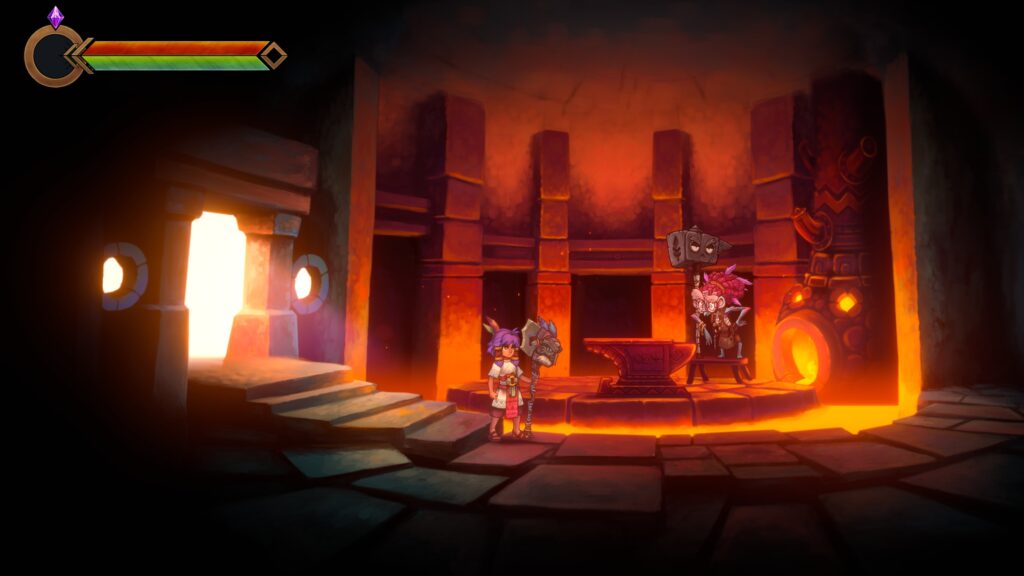
Bosses are quite variable in Itorah and you never know what to expect from any of them. Weaker bosses are surprising in the simplicity of their defeat while others consist of extended chase scenes with frustratingly precise jumps which do not match the loose controls. Overall the difficulty is surprisingly low here and if you don’t beat a boss on your first or second try, it’s a surprise.
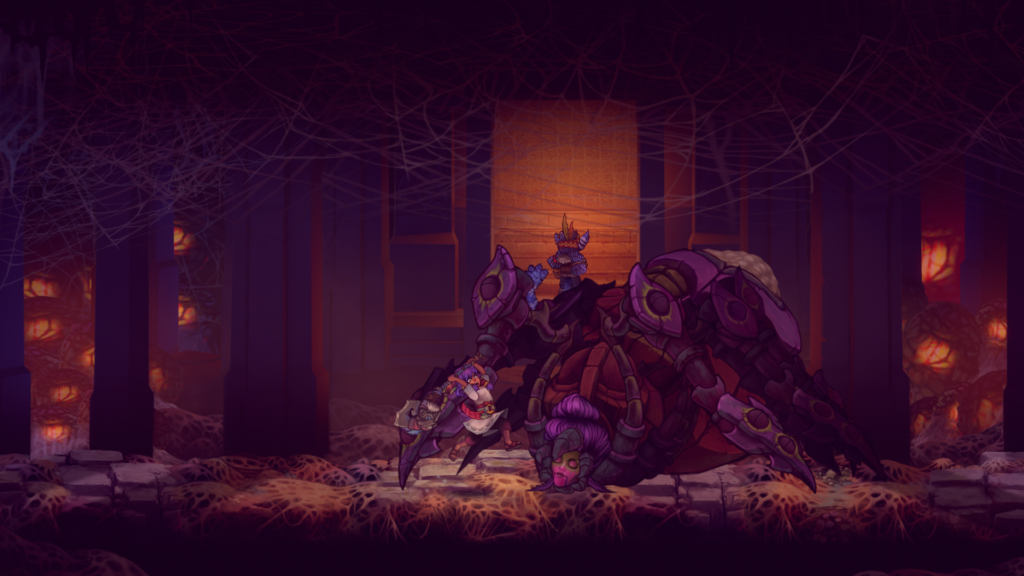
Up until now, it’s been hard to avoid talking about the best part of Itorah. There is no question that this is an utterly gorgeous game. The environments are amazing, the backgrounds are spectacular, and the detailed animations of Itorah and the supporting characters have to be seen to be appreciated. The amount of loving detail put into every single screen in Itorah almost makes up for the rather generic aspects of design in other areas of the game. Almost. The game is as much a piece of art as it is a playable game, and the clever incorporation of various Mesoamerican structures, art styles, and dress blend seamlessly with the gameplay to produce a feeling that you’re really exploring ruined temples and long abandoned jungles. It’s honestly one of the best looking games out there and easily worth playing just to look around. The soundtrack matches the visuals with a surprisingly edgy and modern vibe and there are some absolutely excellent tracks here. There’s more than a hint of Indigenous style to the music but it bends and twists in a way that feels fresh and vibrant.

With soundtrack and hand-drawn visuals both surpassing the gameplay, there is definitely a mixed bag in Itorah. While the game is fun, the first few hours don’t suck you in very well and that’s a definite misstep for a game that’s only maybe 10 hours long depending on your gameplay style and skill level. While the game itself is overall quite fun, the design and combat controls hold players back from a truly deep immersion and running through the beautiful landscapes to get through the long empty spaces is almost a shame because every screen is so beautiful. However, even with the wide variety of environments, temples, and monsters, it still feels like something is missing from the game. At $20 it’s not an expensive game, but at the same time, it might not scratch that exploration itch that you might be looking for with your next Metroidvania. Itorah is well worth taking a look at though, so if it’s up your alley, check it out!
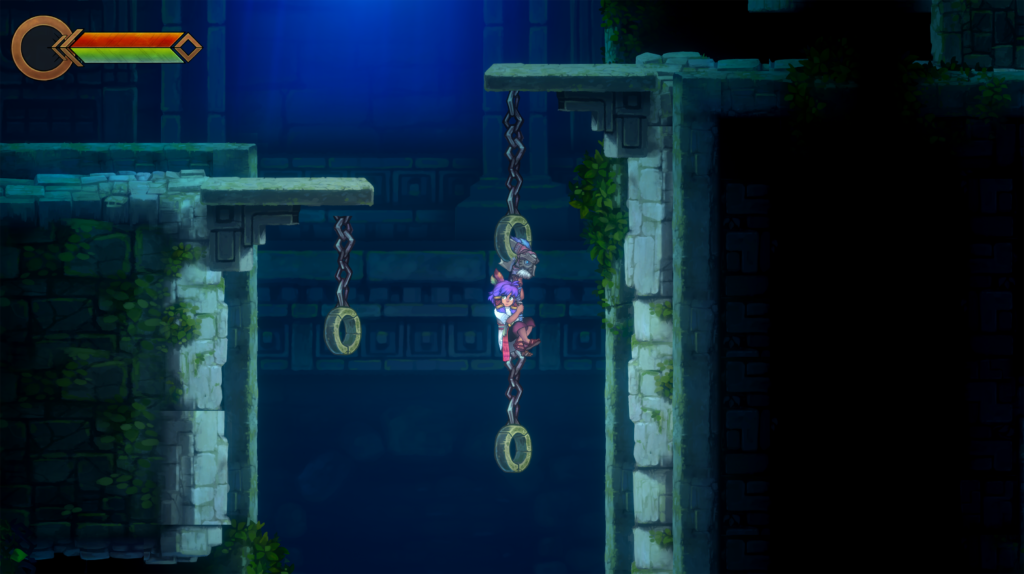
This review is based on a digital copy of Itorah provided by the publisher. It was played on an I7-8700K with 16 GB of DDR4-3000 RAM, an Asus GeForce GTX 1080 ROG Strix graphics card, and a Steam Link using both an Xbox One and PS3 controller. Itorah is currently available on Steam and GOG.

